TOP FAQs
You ask, we answer.
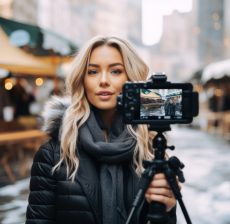
If you’re looking to explore photography, here are 10 quick-fire steps to get you started:
- Grab a basic camera.
- Get to know your camera’s settings.
- Think about what inspires you and what type of shots you want to capture.
- Study the work of photographers you admire.
- Set aside time to spend on your photography and to shoot.
- Have fun, practice and experiment.
- Take a course or attend a workshop.
- Start building a photography portfolio.
- Join a club or community for support.
- Don’t forget to backup your images.
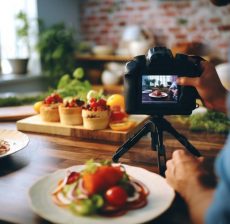
To follow are some of the most popular types of photography:
- Travel
- Landscape
- Nature
- Wildlife
- Food
- Weddings
- Family
- Portrait
- Headshots
- Fashion
- Product
- Commercial
- Concerts
- Events
- Pets
- Sports
- Cars
- Culture
- Street life
- Lifestyle
- Architectural
- Real estate
- Abstract
- Weather
- Astrophotography
- Photojournalism
- Documentary
- Underwater
- Aerial
- Drone
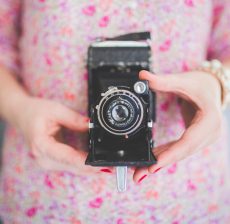
Your choice of camera will depend on what you wish to shoot.
For this reason, it’s helpful to understand the various camera models available as each offer features that serve different purposes.
Most aspiring photographers can start with:
- an iPhone
- a point and shoot
- a digital SLR
- a mirrorless camera
Click here to learn about the differences between the above 4 options.
When it comes to photography, a digital SLR or mirrorless camera can be a great choice if you want to produce big wall prints. However, if your plan is to take images to post on social media, an iPhone or point and shoot might be sufficient.
Either way, it’s best to do some due diligence. Think about your intended use and research camera reviews and online discussion forums. Visit your local camera store and ask other photographers for their recommendations.
Eventually, you’ll start to get an idea of the models and makes that works best for certain projects.
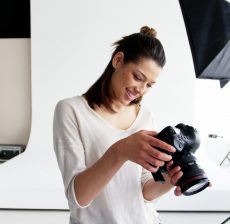
The answer to this is highly subjective. Again, it comes down to what you want to do and personal preference.
All of the popular camera brands offer models that cater for beginners. Nikon, Sony and Canon each make outstanding cameras that can capture high quality photos.
What’s key is to pick a camera that works for the type of images you plan to take. Spend time in camera showrooms to educate yourself, handle the equipment and see what model feels the most comfortable.
Another suggestion is to look at lenses and what’s preferable for your sort of photography.
Cameras range hugely in price so stay mindful of what you can afford. You don’t need to spend a whopping amount when getting started.
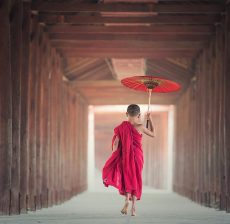
A strong photo:
- captures a moment or tells a story
- evokes a strong feeling or emotion
- holds the viewer’s attention and strikes a connection
- may open eyes, educate or change a person
Traits of a good photo also often include:
- a unique point of view
- excellent composition
- light on or around a subject
- a pleasing colour or tone range
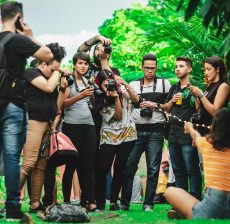
For those in need of more support, taking a class or joining a club could be just the thing. Check for courses or workshops at your local college, art centre or photography store. If you like more flexibility, there are many online courses from which to choose.
That said, many photographers are self-taught. Particularly today, digital technology has made photography accessible to more people. Whether you train professionally or teach yourself, you want to keep learning, practicing and growing.
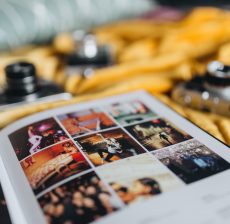
There are multiple ways to generate income as a photographer.
Here are a few for you to consider:
- Sell prints of your work.
- Open an on-demand store to offer posters, photo books, calendars, etc.
- Licence images to stock photo sites.
- Freelance for companies and magazines.
- Find a studio and shoot portraits.
- Start a photography blog.
- Set up a photography YouTube channel.
- Become an affiliate for complementary brands you love.
- Teach classes and workshops.
- Run photography retreats and tours.
- Edit or retouch photos for others.
- Enter photography competitions.
Some people also prefer to transition into photography whilst still employed, e.g. you can start photography as a side business before going full-time.
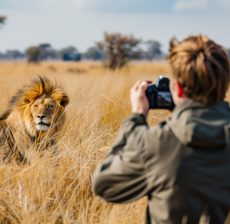
Practice makes perfect so just get out there and shoot.
This is true regardless of if you want to be a professional photographer or hobbyist.
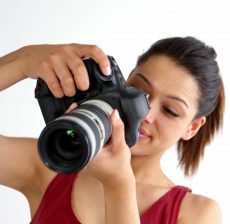
Every day, we meet countless people who would like to explore photography but don’t know how.
That’s why we introduced Lens on Life to help would-be photographers build confidence and develop their photographic skills.
The campaign advocates photography for everyone. By sharing tips and tricks, our aim is to help you capture striking images and share them with the world.

You’re not alone.
Here’s some places and spaces to find more support and information.
You might also like our ‘Hit Lists.‘ They’re compilations of our photography favourites from buying guides and courses to articles, online resources, gifts and much more.

